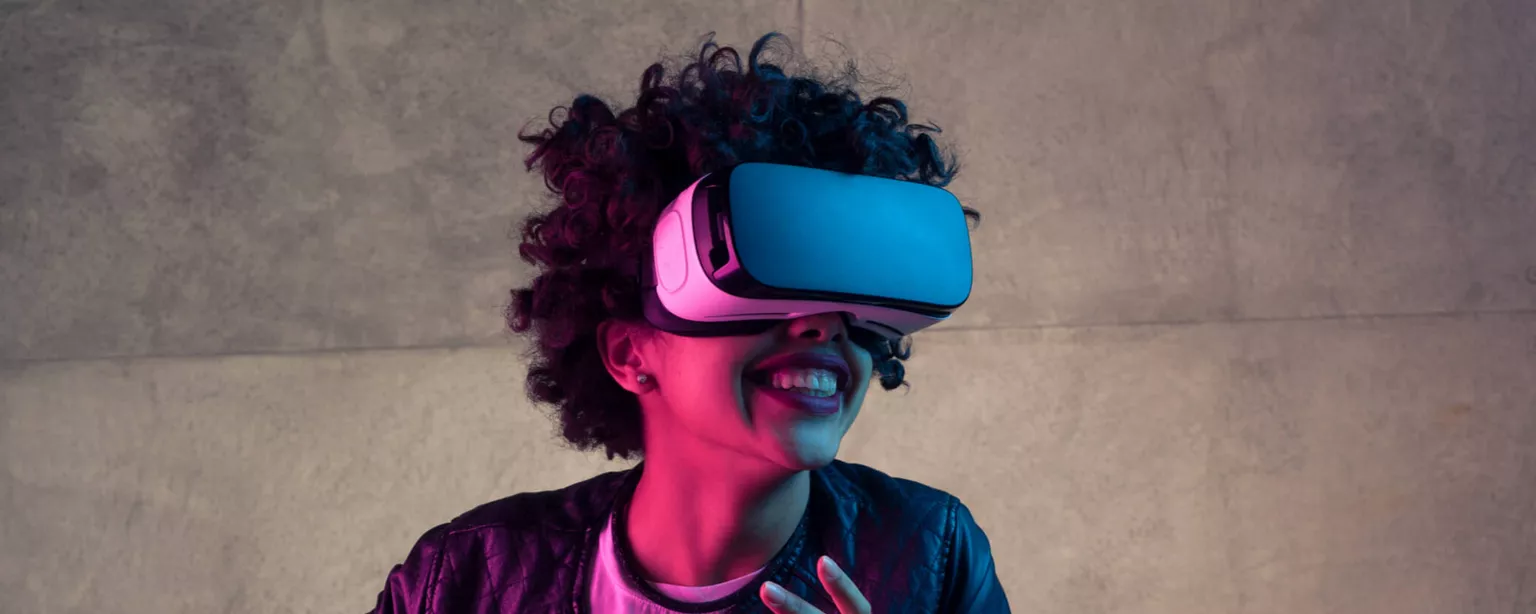Augmented reality (AR) today is a little like the World Wide Web in the mid ’90s. It’s there and some people use it, but marketers haven’t yet figured out how to monetize it on a larger scale beyond entertainment. When that happens, everything will change. The same is true of other immersive technologies, such as virtual reality (VR) and mixed reality (MR).
Lumped together under the umbrella term of extended reality (XR), these three technologies have not yet come fully into their own. Besides gaming, marketers are still trying to figure out what to do with them and how to build immersive experiences that engage and delight audiences.
Will this trend lead to a boom in augmented reality jobs and virtual reality jobs? “Absolutely,” says Lauren Williams, division director for Robert Half Technology, sister division of The Creative Group. “As AR, VR and MR have become more accessible to the consumer, companies have begun to expand their programs, which has increased the demand for candidates.”
Indeed, companies in the United States are eager to adopt extended realty. Of the managers surveyed by Robert Half for our report, Jobs and AI Anxiety, 71 percent said they are either already using AR and VR, or plan to do so within the next three to five years.
So yes, opportunities exist for creative professionals who are interested in working with immersive technologies. But what exactly are AR, VR and MR?
Defining augmented reality, virtual reality and mixed reality
These three platforms share essentially the same idea: putting a digital layer viewed through a smartphone or headset over our physical reality. The difference among them is the relationship between these two layers and the degree of immersion.
- Augmented reality is about using a portable device, such as a smartphone, to add a few extra details to what we see. Examples include Google Glass and Pokémon Go, both of which received lots of hype — some positive and some extremely negative — but have since joined the annals of yesterday’s tech fads. Currently the most popular applications of AR are on Snapchat, where selfie lovers use smart filters to decorate and animate photos on the fly.
- Virtual reality is about full immersion, an experience that blocks out the physical world. VR users wear a goggle-and-earphone combo to engage in a 3D digital experience. Sometimes gloves with built-in sensors come into play. Consumer-grade headsets like Oculus Rift and PlayStation VR have been big hits. Other users construct a simple headset using their smartphone and some cardboard.
- Mixed reality is AR that allows physical and virtual objects to interact and work in tandem. This can be in either direction: Gesture-recognition devices such as the Xbox Kinect let users control on-screen characters by making physical movements, while industrial applications of MR give technicians a tool to control drones, robotic arms and other physical apparatuses.
Types of virtual reality and augmented reality jobs
Currently, augmented reality jobs offer the greatest opportunities for creative professionals. This is a reflection of the broader user base for AR technology, although virtual reality jobs are also growing at a fast rate.
Most of the augmented reality jobs available today are best described as existing job titles with an AR descriptor. Common positions include:
- AR/VR content developer
- AR/VR content strategist
- AR/VR user experience designer
- Designer, animator or sound artist specializing in AR & VR
- AR/VR community manager
- AR/VR project manager
While immersive technology evolves and mutates, the goals for the businesses using it remain the same: to engage customers and increase market share. Something else that hasn’t changed is that augmented reality jobs are about using your creative skills first and working with technology second.
There’s not a lot of salary data available for this emerging field just yet. To get an idea of the compensation to expect, explore the Robert Half Salary Guide and search for roles similar to those in the list above. And as XR roles are complex and require niche expertise, wages are likely to center around the 75th percentiles of the salary tables.
How to transition into virtual reality and augmented reality jobs
To get your foot in the door of this exciting industry, Williams recommends doing three things:
“First, go to events,” she says. “There are tons of meetup groups with people who are passionate about immersive technology, pursuing their own projects or actively working in the field. They are all looking to make contact with likeminded people. Hackathons are another amazing way to meet people and get involved.”
Her second tip is to create and curate a digital portfolio, even if it’s just working on a labor of love. “I tell candidates this all the time, even in the design space. One of the worst things you can do is to stop creating work that you can showcase,” Williams says. “People want to see your thought process, your ideas and your skill level. If you’re not actively working on improving that, you’ll have nothing to show.”
Finally, she recommends building your brand. “This goes for anyone creative, but especially in a new field,” she says. “Define who you are in your portfolio, LinkedIn profile and across your entire digital presence. How you present yourself is vital to being a desirable candidate and finding a job.”
The skills required for virtual reality and augmented reality jobs
Do you need to go back to school if you want to work in extended reality? Experts say no, as most employers aren’t looking for specific certificates, degrees or qualifications. “At this point, it’s more about the experience the candidate has,” Williams says. “The space is still so new that people are able to carve out their niches.”
If you’re looking to add AR, VR and MR to your skill set, here are some things to focus on:
- Developing AR and VR content ideas — The best way to start coming up with your own augmented and virtual reality concepts is to first log as much time as possible using the technology. Download some AR apps other than Pokemon Go and Snapchat to see how else the technology is being used. Try out a variety of VR headsets and motion sensors to get an idea of what they can do. Start thinking like a creative who specializes in AR or VR.
- Working with AR/VR platforms — Unity and Unreal Engine are the most popular sites for building applications in both augmented and virtual reality. These are already widely used in gaming, so there are plenty of online tutorials to help develop your skills. You can also look at dedicated platforms like Amazon Sumerian and Google ARCore.
- Creating assets — Augmented and virtual reality require high-quality, detailed assets such as 3D images and animations. Blender is a great place to start if you need 3D modeling experience. It’s open-source and supported by a strong community. Other forms of assets, such as audio for VR, are important as well.
- Software development — AR and VR roles are heavy on technology, so it helps to know how to code in Java, C or C++. Software development skills can help your resume stand out when applying for these jobs. Most AR apps run on mobile platforms, so knowledge of the Android SDK (software development kit) or iOS SDK is a big plus. It’s also good to have a working knowledge of the Agile development methodology.
With XR in general being such a recent field, now is an excellent time to get in on the action and prepare yourself for a rewarding augmented reality job or virtual reality career.
Watch this video to find out more about how digital transformation is impacting creative teams and professionals.









